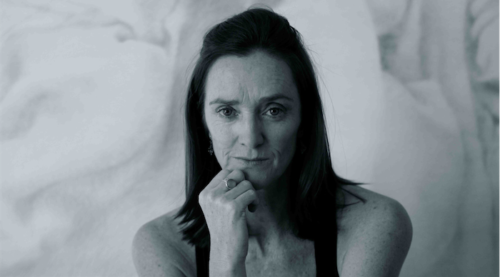
“REINVENTING myself, that is my subtext,” choreographer and installation artist-turned filmmaker, Sue Healey says of “Capturing the Vanishing: A choreographer and film,” her newly-published “Platform Paper” for Currency House.
“I didn’t want it to be deeply pessimistic, I want my paper to be on a positive trajectory, but there needs to be a change in many things to do with how we perceive dance.”
Healey, well-known here as the director of the company Vis-a-Vis Dance Canberra from 1993 to 1995, has been living in Sydney since 2000. She has created 10 significant films with cinematographer Judd Overton, including the feature-length film “Virtuosi” (2012) and a documentary about a group of senior dancers in Canberra, “The GOLDS” (2014), which have screened in more than 40 cities internationally.
As a visual artist she was a 2018 finalist in the 65th Blake Prize and a 2017 finalist in the Digital Portrait Award at the National Portrait Gallery for her six-minute “portrait” film featuring ex-Bodenwieser dancer Eileen Kramer, aged 103, and has shot footage on the lakebed at Mirramu near Bungendore of former “CityNews” Artist of the Year Elizabeth Dalman.
In 2019, she argues, there is a predicament in dance funding, so much so that at a recent “crisis” meeting of independent dance artists in Sydney, it became obvious to her that the emerging generation doesn’t expect to make a living from its art.
“I find this hard to swallow,” she says.
“The constant disappearance of dance makes it difficult to commodify, but also the way of making dance and the presentation of it have created issues working against the dance form.”
That’s where film came into her life, as her paper explains.
“I have found my own survival mechanism in dance by being more entrepreneurial and diversifying and it’s made me more adaptable,” she says, explaining how many dance organisations, not least Ausdance National, have had to close, leaving independent artists surviving on the smell of an oily rag.
Even before coming to Canberra, she had begun to notice how dance was being marginalised by what she calls “the lack of concrete artefacts”.
“Dance finds it so difficult to prove its value to everyone, but I realised that film could assist me in this process of proving the value of what dance is,” she says.
“Film has helped me find new audiences, suddenly people understood what I was trying to do.
“Younger generations live their lives through screens, so we must place imagery on those platforms; their brains are wired in a different way, so it’s imperative that we get into this.”
“Capturing the Vanishing: A choreographer and film” by Sue Healey, “Platform Paper No. 60”, available at currencyhouse.org.au
?
Who can be trusted?
In a world of spin and confusion, there’s never been a more important time to support independent journalism in Canberra.
If you trust our work online and want to enforce the power of independent voices, I invite you to make a small contribution.
Every dollar of support is invested back into our journalism to help keep citynews.com.au strong and free.
Thank you,
Ian Meikle, editor




Leave a Reply